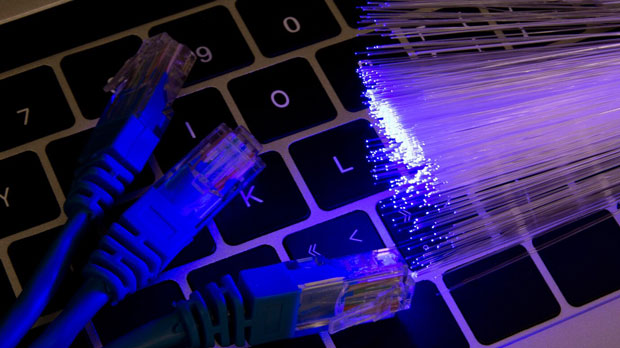When it comes to wireless network crawlers, stability is a key factor in ensuring consistent and accurate data collection. Among the tools available for this task, PYPROXY and Charles Proxy stand out for their unique features and capabilities. In this article, we will assess the stability of both tools, focusing on their performance in wireless network crawling. By evaluating factors such as ease of use, configuration, reliability, and overall efficiency, we aim to provide valuable insights to help users make an informed decision about which proxy tool best suits their needs. Whether you are a developer, researcher, or a business professional, understanding the strengths and weaknesses of these tools can be crucial for optimizing your crawling tasks. Introduction to Wireless Network CrawlersWireless network crawlers play a crucial role in various data-gathering and monitoring tasks, especially when collecting information from websites, mobile apps, and APIs. Their function is to simulate the browsing activity of a user, but with enhanced control over data flow, which makes them ideal for tasks like scraping, testing, and analysis. However, the success of these operations hinges heavily on the stability and performance of the proxy tools used to manage network traffic. What Is PyProxy?PyProxy is a Python-based proxy server designed for high-performance networking and proxying tasks. It is an open-source tool that allows users to route their network requests through a proxy server, making it suitable for applications such as web scraping, network testing, and privacy protection. PyProxy is praised for its lightweight architecture, ease of integration with Python scripts, and scalability, making it a popular choice for developers seeking a custom solution for network management.What Is Charles Proxy?Charles Proxy is a comprehensive web debugging proxy tool that provides advanced features for monitoring and modifying HTTP and HTTPS traffic. While Charles Proxy is often used for web development and troubleshooting, it is also suitable for use in wireless network crawling. It is particularly known for its user-friendly interface, powerful session recording capabilities, and the ability to inspect and manipulate network requests in real time. However, Charles Proxy is a commercial tool, which means it comes with a licensing cost that may not appeal to all users, especially those with budget constraints.Comparison Criteria: Evaluating Stability in Wireless Network CrawlersWhen comparing PyProxy and Charles Proxy for wireless network stability, it’s essential to consider several key factors that directly affect performance:1. Performance and Speed - PyProxy, being a lightweight Python-based tool, can handle large amounts of traffic efficiently, without much overhead. This makes it ideal for tasks that require high-speed network traffic management. - Charles Proxy, on the other hand, while feature-rich, can sometimes suffer from performance bottlenecks when processing heavy loads of network traffic, especially in complex crawling scenarios. It may require more system resources, which can impact the overall stability if not properly managed.2. Ease of Configuration - PyProxy is highly configurable, but this comes with a learning curve. Setting up and managing configurations can be challenging for users without much programming experience. However, for those who are comfortable with Python, PyProxy provides a flexible and customizable environment for network management. - Charles Proxy provides an intuitive and user-friendly interface, which makes it more accessible to users who are not as technically inclined. Configuration settings are easier to adjust, and the setup process is quicker, even for beginners.3. Stability in Network Crawling Tasks - In terms of stability, PyProxy offers robust performance under controlled conditions, particularly when handling simpler, smaller-scale crawling tasks. However, its performance can degrade when dealing with complex or large-scale operations, as it relies on custom Python scripts, which can be prone to errors or misconfigurations. - Charles Proxy excels in maintaining stability, even under heavy traffic conditions. Its visual interface allows for better monitoring and troubleshooting, ensuring a more reliable crawling experience. However, stability can still be impacted by issues such as insufficient system resources or network congestion, as Charles Proxy requires more memory and processing power.4. Proxy Rotation and IP Management - PyProxy offers advanced features for rotating IPs and handling proxy servers, making it suitable for web scraping tasks that require constant IP rotation. Its flexibility allows users to implement proxy rotation strategies in their custom Python scripts. - Charles Proxy does not provide as much flexibility for proxy rotation as PyProxy. While it supports basic proxy configurations, it requires additional plugins or manual intervention to implement complex IP rotation strategies, which can reduce its effectiveness in certain crawling scenarios.Pros and Cons of PyProxy and Charles ProxyAdvantages of PyProxy1. Customizability: PyProxy offers high customization through Python scripting, allowing users to build tailored solutions for various network management tasks.2. Lightweight: Its lightweight nature ensures efficient performance with minimal system overhead.3. Open Source: PyProxy is free to use, making it an attractive option for budget-conscious developers and researchers.4. Advanced Proxy Rotation: Ideal for users who require IP rotation and advanced proxy management.Disadvantages of PyProxy1. Steep Learning Curve: The configuration and management of PyProxy may be complex for users without programming experience.2. Limited Built-in Features: Compared to commercial tools like Charles Proxy, PyProxy lacks some of the more advanced features and GUI tools that make debugging and analysis easier.Advantages of Charles Proxy1. User-Friendly Interface: Charles Proxy’s graphical interface simplifies the process of managing network traffic and analyzing requests.2. Comprehensive Debugging Features: It provides a wide range of debugging and traffic manipulation tools, making it ideal for web developers and testers.3. Real-Time Session Monitoring: Charles Proxy allows users to monitor network sessions in real time, which is essential for identifying issues during wireless network crawling.Disadvantages of Charles Proxy1. Performance Issues: Charles Proxy can experience performance degradation under heavy loads or complex tasks, especially when dealing with large-scale crawling operations.2. Cost: As a commercial tool, Charles Proxy comes with a license fee, which may be prohibitive for small businesses or individual users.3. Limited IP Rotation: For advanced users needing proxy rotation, Charles Proxy may require additional plugins or manual configuration, which adds complexity.Which Proxy Tool is Better for Wireless Network Crawling?The choice between PyProxy and Charles Proxy depends largely on the specific requirements of the wireless network crawling tasks.- For Developers and Programmers: PyProxy may be the better option due to its high customizability and advanced proxy features. If you are comfortable working with Python scripts and require fine-grained control over network requests, PyProxy is a powerful tool to consider.- For Beginners and Non-Technical Users: Charles Proxy is likely the better choice, offering a more user-friendly experience with its intuitive interface and built-in debugging tools. It is particularly suited for those who need a reliable, all-in-one solution for monitoring and analyzing network traffic without extensive programming knowledge.Both PyProxy and Charles Proxy offer distinct advantages for wireless network crawling tasks. PyProxy shines in customizability, performance, and flexibility, making it ideal for developers with specific needs. Charles Proxy, on the other hand, offers a more accessible solution with a user-friendly interface and advanced debugging features. The best tool depends on the user’s technical expertise, network crawling requirements, and resource constraints. By carefully considering these factors, users can select the tool that will provide the most stability and efficiency for their wireless network crawling projects.
Sep 22, 2025



































































